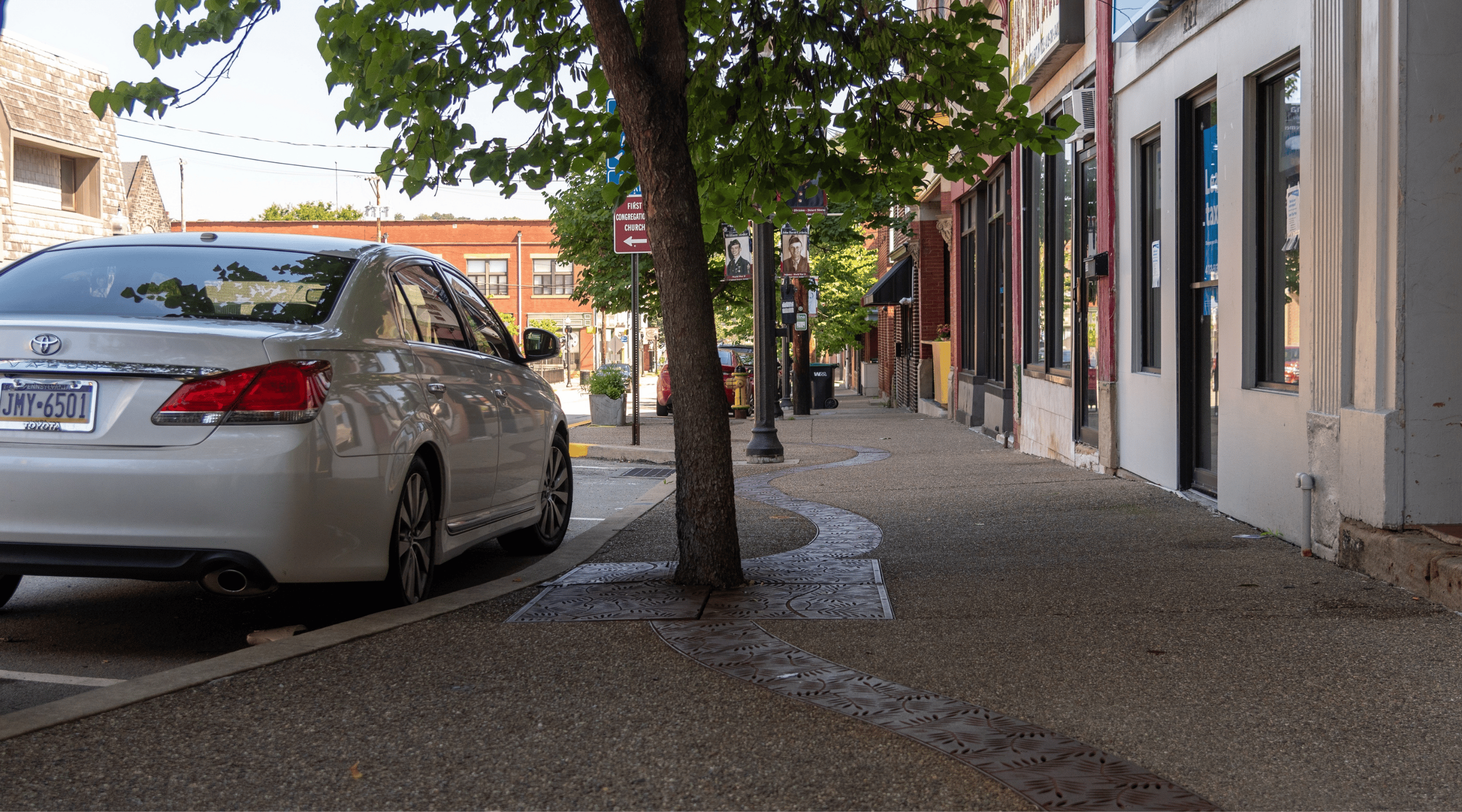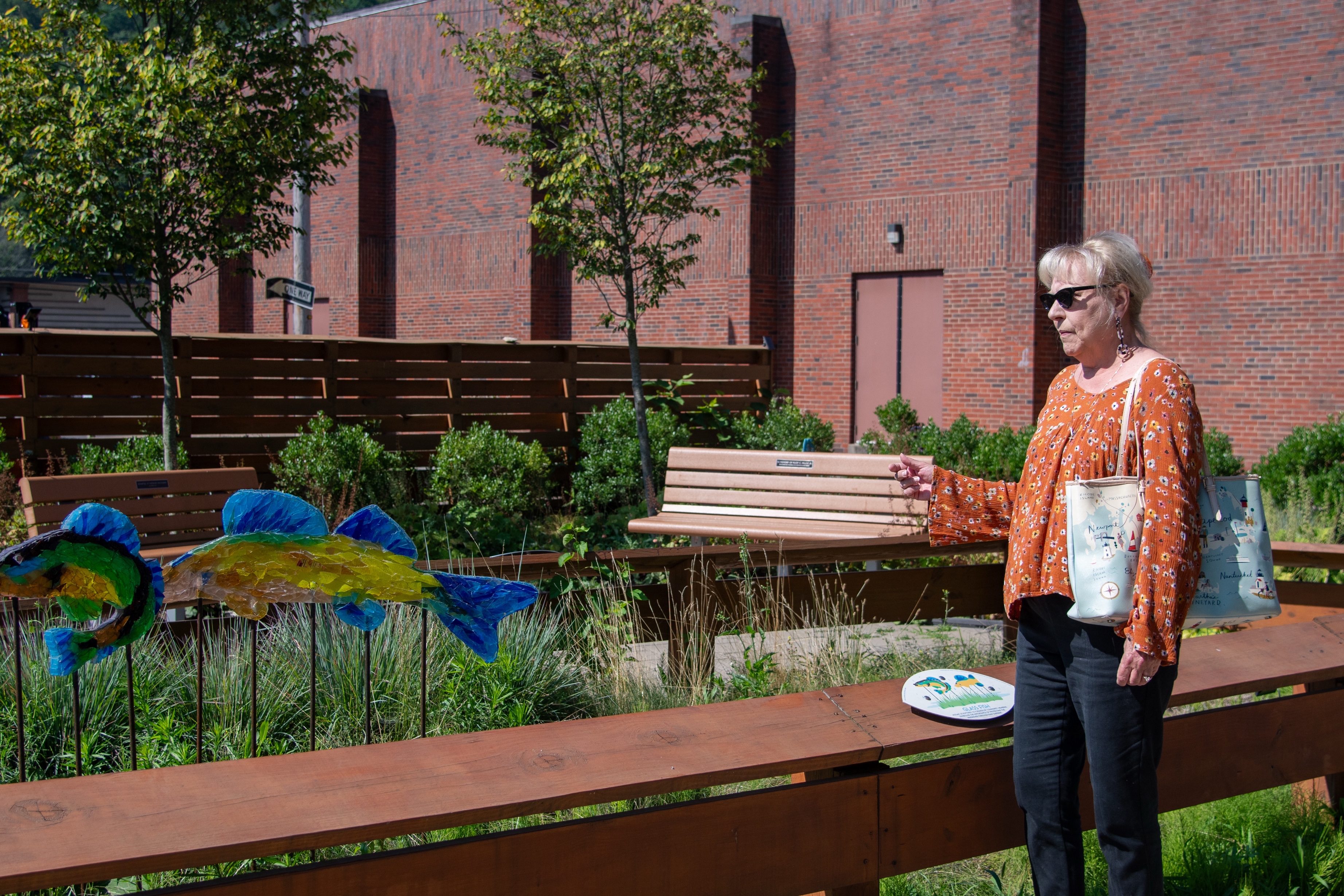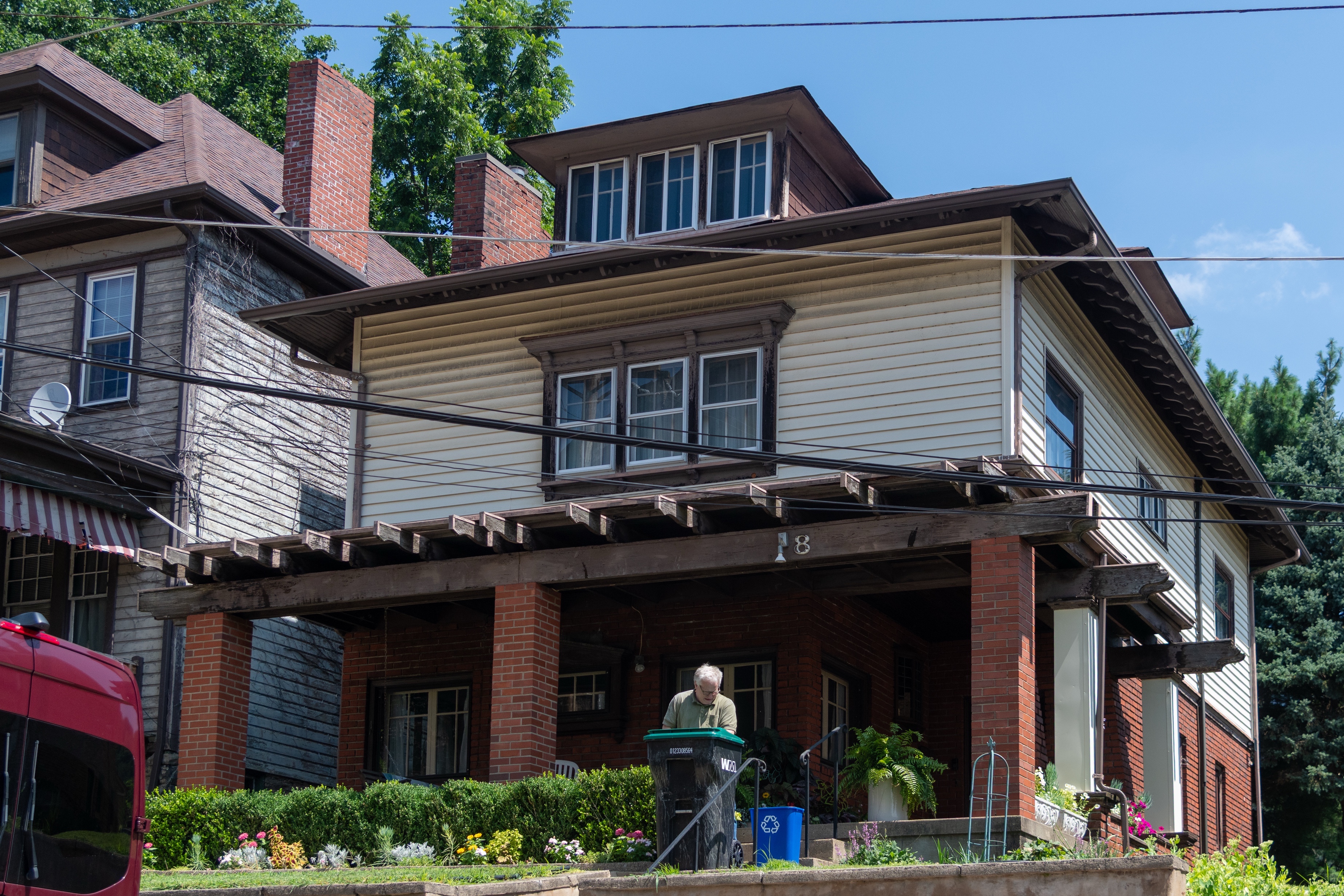
In a borough that squeezes around 3,300 people into less than a square mile, even a 25‑foot strip of grass can feel like a luxury.
That’s why residents and officials say Allegheny County’s Vacant Property Recovery Program has become one of their most effective tools — not just to reduce blight, but to create breathing room and community spaces where none existed.
The program’s premise is simple. Rather than keep a warehouse of tax-delinquent lots to dole out, the county asks would-be buyers to do the hunting. So far 91 of 130 municipalities work with the county to offload neglected parcels.
People identify parcels they believe might qualify, and then submit an application to the county, said Michael Carroll, public information officer of Allegheny County Economic Development.
Since 2008, 3,233 applications have been received, according to the county database. Of those, at least 1,608 were preliminarily eligible and moved forward. A minimum of 1,331 were conveyed for rehabilitation.
Throughout Southwestern Pennsylvania and amid population declines, local governments can end up with thousands of parcels and property – ranging from side yards to dilapidated homes. Many grapple with how to get property back on the tax rolls.
In the Vacant Property Recovery Program, Allegheny County does not own the properties but rather helps pair land eligible for conveyance or sale, to a new owner.
Westmoreland County has a land bank program, in which people can purchase properties, some of which have been slated for demolition.
In Lawrence County, people can purchase residential or commercial structures for a minimum bid of $500. There’s also a side yard program where residents can purchase lots next to their home for $150. Butler County officials offer a similar program.
In Allegheny County, most of the wins are small and personal.
“The VPRP will certainly accept applications proposing personal use of a parcel, and this is honestly our most common application type,” Carroll said.
Neighbors use it to turn a weed-choked lot into a side yard or a much-needed parking space; sometimes they take on a full structure and restore it for themselves or their family.

No one knows how precious a scrap of green can be better than Mary Ellen Ramage, Etna’s longtime borough manager. On Butler Street, buildings shoulder each other like commuters on a crowded bus.
“We’ve had a lot of people apply for and then be able to acquire the vacant lot next to them,” Ramage said. “Some paved off-street parking; others finally have space for a garden.”
For residents with children, pets, or mobility issues, that can be more than aesthetic — it’s a quality-of-life matter.
The borough itself has leaned on the program when it saw an opportunity to solve multiple problems at once. Etna applied as the purchaser twice, paying only a few thousand dollars each time, Ramage said.
One targeted property had been a hotel, abandoned for over a decade and saddled with delinquent taxes. Today it’s a rain garden: a quilt of native plants, benches tucked among the flowers, and a basin that quietly captures stormwater rolling off roofs and sidewalks.
“There was no green space along our business district — buildings are right up against each other,” Ramage said. “This gave us a place to sit, and it solved some stormwater issues.”
Another vacant building sits in a high-risk floodplain.
“The owner just walked away after the flood in 2004; bricks were literally falling down to streets.” said Ramage.
In traditional development, there would have been a liability. Instead, Etna turned it into “Eco Park”: raised herb beds, a little free library, metal sculptures crafted by Shaler Area High School students, trees donated by Tree Pittsburgh, and a broad, engineered rain garden designed to soak up flash floods. What was once a tangle of weeds and broken glass now feels like a community living room.
It doesn’t happen overnight. Clearing decades of unpaid taxes, tracking down heirs scattered across states, and moving a deed through court takes time.
“It’s lengthy, probably takes us about nine months or so, maybe even longer,” Ramage said of the current process.
For Holland and Brian Reneski, patience and effort paid off. Around 2017, the couple filed an application for a three-story single-family house.
The county liked their pitch but held the deed until they proved they could follow through. This is a move to make sure applicants keep their promise to redevelop the property accordingly.
They finally took the title around 2020 and moved in during 2023.
The cost in between? New electrical, plumbing, structural repairs, and finish work — many times more than what they paid up front. “At least $100,000” Holland said.
The upside: “They waive all of the previous taxes that have not been paid, so they can just get it back on the books,” Holland said.
The downside: no shortcuts. “You can’t be in a rush,” she cautioned.
Still, the payoff — a restored porch beam carved with century-old details, oak built-ins, two working fireplaces — feels like a one-of-a-kind collaboration.
“The greatest Reneski art project,” Holland joked.

Lauren Connelly, the director of Allegheny County Economic Development, describes the VPRP program as a way to “reactivate” and “reclaim” tax‑delinquent lots that sit like missing teeth on otherwise solid blocks.
To move cases faster, Connelly’s team is beefing up capacity: They’ve just engaged a new appraiser, and they are setting up a system to enable individuals to apply online, she said.
Since the program began it’s grown from one to three full-time managers.
“We will welcome a new program manager in the upcoming weeks,” she said, calling it a priority to deliver a “responsive, timely” service.
The goal: cut the 12- to 18-months average timeline by eliminating avoidable delays and giving applicants real‑time status updates.
Success, Connelly said, is measured in three buckets: how many municipalities buy in, how many properties are conveyed, and what they’re turned into — side yards, community gardens, event spaces, even playgrounds for child care centers.
“We monitor the number of applications, the number conveyed, and then the number of communities that are participating,” she said.
An outside assessment now underway will benchmark how well all of the county’s land‑recycling tools are working and where to improve.
Ramage’s wish list is short: faster processing, clearer communication, and continued county support. Connelly’s team members say they are already moving in that direction, working on a user-facing portal and hiring.
The county is also trying to “demystify” eligibility — what exactly counts as abandoned or tax delinquent enough — so more residents feel confident applying.
For now, the program continues to run on a simple formula: a neighbor sees a problem lot, a neighbor applies with ideas, the county clears the title, and everyone waits while lawyers, lienholders, and heirs have their say. If everything goes by what it should, months later, a deed changes hands.
In Etna, those acts are visible: a rain garden where water used to pool, a pocket park where weeds once rose waist-high, a lovingly restored home that had been left for dead. In a dense borough, the program has made room for gardens, for art, for kids to run, and for families to stay.